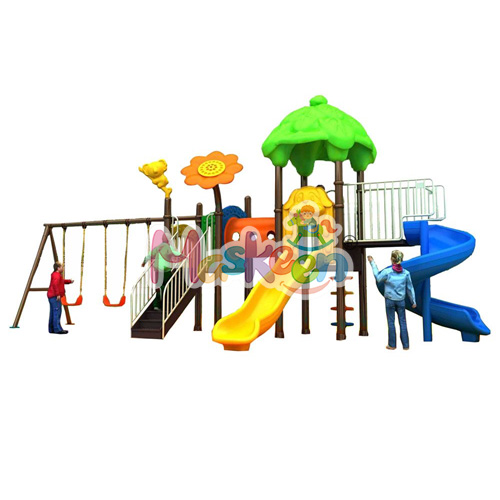- Toys
- Soft Play Equipment
- Trampoline
- School Furniture
- Exhibitions
- Achievements
- New Arrivals
- About Us

Creating inclusive environments in schools is no longer an option—it is mandatory! Educators and communities are becoming more aware of the diverse needs of children in an environment where all play equipment, including school slides, will be appropriate for children of all abilities. Inclusive play fosters motor development, helping students acquire social skills and empathy in addition to confidence. So how are School Slides redesigned or chosen so that every child who comes feels welcome and safe?
Inclusivity is more than just accessibility. Ramps and wheelchair access are certainly important, but true inclusivity means all kinds of different kids can share a playtime, whether with physical, cognitive, or sensory challenges. These include those with mobility impairments, visual or auditory impairments, sensory processing disorders, or developmental delays. Playground slides and Classroom Furniture are not merely instruments for recreation; they also serve another purpose in the educational experience. By designing slides inclusively, the slides also become the means to bridge children with varying capabilities and encourage their peers in the safe and engaging environment in which they can all enjoy themselves without fear.
Some features in the design of all-inclusive slides should be kept in mind:
Outdoor Slides should not exist separately. Slides work best in conjunction with other play equipment that provides access features. For instance, outdoor slides could have inclusive swings, instruments, or balance elements that would purposely challenge and entertain children with varied skills. Manufacturers now offer multifunction play systems comprising Inflatable playhouses with integrated slides, ramps, and crawl spaces. These soft, flexible structures really suit the child with low muscle tone or those children who really need a less rigid environment in which to safely explore movement.
Starting with inclusive slide building and going down to creating the playgrounds, input has to come from several parties. Educators are familiar with the day-to-day needs of their students. Occupational therapists can suggest features that promote development. Parents of children with disabilities would be in the best position to explain what their children need most. Manufacturers of classroom furniture who specialize in child ergonomics would also be useful in designing the outdoor and indoor play areas. Quite a number of these Classroom Furniture Manufacturers are now offering customizable, inclusive play equipment solutions that blend traditional play features with therapeutic design elements.
Unarguably, play should be educational. Slides should be located next to other features that will support integrated learning, such as sensory walls, sound panels, or fine motor stations. Montessori Toys located in slide zones would encourage children to explore cause and effect, spatial awareness, and social skills as they move between structured play and free movement. In essence, learning through movement and interaction with the environment, as Montessori principles highlight, is well supported by inclusive slides.
An inclusive school slide is more than a piece of playground equipment: It is a doorway to sustaining an atmosphere where every child feels adored, which in turn produces a supportive and welcoming community. Accessibility, sensory needs, and input from professionals combine to promote the goal of building school playgrounds where every child is welcome. This includes everything from Outdoor Slides and Inflatable Play House to liaising with Classroom Furniture Manufacturers to embed inclusivity in the very core of playground design. Pairing this with Montessori Toys and a thoughtfully designed classroom environment will ensure full child development for every last one of these initiatives.